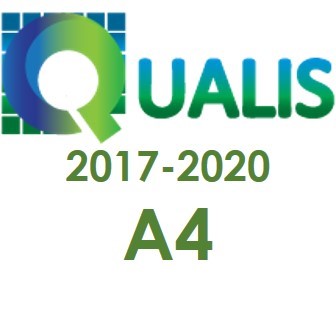Simulação numérica por elementos finitos da solidificação de aços inoxidáveis
Palavras-chave:
Simulação numérica, MEF, solidificação, aços inoxidáveis.Resumo
A classe dos aços inoxidáveis é conhecida por sua resistência a corrosão e oxidação em altas temperaturas em meios aquosos, assim como ao impacto e também por possuir uma boa durabilidade. O processo da solidificação foi simulado em modo transiente por elementos finitos das amostras de aços inoxidáveis, onde as propriedades termofísicas tanto do molde de areai e do aço foram em função da temperatura, cujo resultado foi a distribuição das isotermas e gradiente térmico em função da temperatura, sendo que estes fenômenos podem influenciar na segregação dos elementos da liga e na estrutura das fases formadas, sendo os resultados obtido computacionalmente foram satisfatórios comparados aos resultados experimentais da literatura.
Downloads
Referências
HOWE, A. A. Segregation and Phase Distribution During Solidification of Carbon Alloy Stainless. Office for Official Publications of the European Communities., Luxembourg: Office for Official Publications of the European Communities, 1991, p. 20-35.
JACOBI, H. Casting and Solidification of Steel v. 1. Dusseldort, Germany: Institut für Eisenforschung 1978, p.10-20.
BLAIR, M.. Properties and Selection: Irons Steels and high performance alloys. v. 1, ASM Handbook, ASM International, 10ª. Ed. Ohio,USA.1993.
FERREIRA, D. E. M. Estudo da solidificação de aços inoxidáveis fundidos da classe CF-8M. 2015. Dissertação de Mestrado em Engenharia e Ciência de Materiais. Ed. Universidade Estadual de Ponta Grossa, Ponta Grossa-PR, 2015.
COMMUNITIES, C. O. T. E. Casting and Solidification of Steel: Information
Symposium v. 2: Luxembourgo: IPC Science and Technology Press, 1977.
SMALLMAN R. E. NGAN A. H. W. Modern Physical Metallurgy. Oxford (UK): Butterworth-Heinemann, 2013.
SVOBODA, J. M., Casting: Ferrous casting alloys, v. 15, 9ª. Edição, Ohio, USA: ASM Handbook, ASM International, 1992.
ALLAN, G. K. Solidification of austenitic stainless steels. Ironmaking &
steelmaking. v. 22, n. 15, p. 465-477, 1995.
YAO, Y. H.; WEI, J. F.; WANG, Z. P. Effect of long-term thermal aging on the
mechanical properties of casting duplex stainless steels. Materials Science and
Engineering: A. v. 551, p. 116-121, 2012.
BUSBY, J. T.; MAZIASZ, P. J.; ROWCLIFFE, A. F.; SANTELLA, M.; SOKOLOV,
M. Development of high performance cast stainless steels for ITER shield module
applications. Journal of Nuclear Materials. v. 417, p. 866-869, 2011.
WON, Y. M.; THOMAS, B. G. Simple model of microsegregation during solidification of steels. Metallurgical and Materials Transactions A. v. 32, p.1755-1767, 2001.
del COZ DÍAZA J.J., RODRÍGUEZA P.M., NIETOB P.J.G., Castro-Fresn D. Comparative analysis of TIG welding distortions between austenitic and duplex stainless steels by FEM. Applied Thermal Engineering, v.30, p. 2448-2459, 2010.
DAHA M.A., NASSEF G.A., ABDALLAH I.A., ABOU SEEDA H.M. Three-Dimensional Thermal Finite Element Modeling for Keyhole Plasma Arc Welding of 2205 Duplex Stainless Steel Plates. International Journal of Engineering and Technology, v..2, p. 720-728, 2012.
PARIONA, M. M.; TAQUES, A. F.; WOICIECHOWSKI, L. A. The Marangoni effect on microstructure properties and morphology of laser-treated Al-Fe alloy with single track by FEM: Varying the laser beam velocity. International Journal of Heat and Mass Transfer, v.119, p. 10-19, 2018.
PARIONA, M. M.; OLIVEIRA, F.; TELEGINSKI, V.; MACHADO, S.; PINTO, M. A. V. Simulation and optimization of Al-Fe Aerospace alloy processed by laser surface remelting using geometric Multigrid solver and experimental validation. Heat Mass Transfer, v. 52, p.1037-1049, 2016.
COMSOL Software, Stockholm, Sweden, 2018.
Arquivos adicionais
Publicado
Como Citar
Edição
Seção
Licença
Copyright (c) 2021 Revista Brasileira de Iniciação Científica

Este trabalho está licenciado sob uma licença Creative Commons Attribution-NonCommercial-ShareAlike 4.0 International License.




